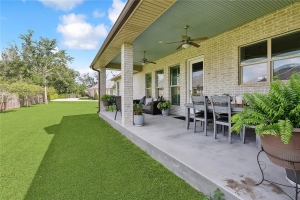Not every yard has grass, in fact, some yards sans grass have great curb appeal. If you have a yard that doesn’t have grass, you can still use innovative landscaping ideas. Here are some of these landscaping ideas from professionals in the industry,
Implement Artificial Turf
Let’s face it, grass is a lot of upkeep and there can be many benefits of having a yard without grass. A great nice green alternative is artificial turf which can look and feel almost like natural grass. This is the perfect low-maintenance yard which is great for reducing water usage and is eco-friendly in many other ways. Synthetic grass is not only weep-proof but also doesn’t attract any pests.
Grow Moss
Moss is a very pretty source of greenery. It is a great groundcover that saves not only water but time and fertilizer as well. Grass can go dormant during the cooler season, however, moss will stay green all year long. Most grass will not grow in the shade but moss will grow in the shade, and will grow in poor soil conditions. There are tons of varieties of moss so you have many choices to pick from.
Consider Other Groundcovers
Moss is not your only option, as there are other groundcovers that can be good substitutes for a grass lawn. These include Creeping thyme, Chamomile flowers and clover lawns which can grow great in soil. Remember that there are both tall growing and low growing ground covers, so you will need to choose which is best for you. Other factors to consider are your soil conditions and the amount of sun, shade and rainfall.
Plant a Native Flower Bed
This is a perfect eco-friendly option for your landscaping needs. Not only will this take the place of green grass, but a native plant garden will also add color to the landscaping. A good tip is to plant perennial beds so they will come back each year.
Use Gravel, Mulch & Bark Chippings
This is the perfect option for those who do not have to upkeep growing plants. Gravel, mulch, or bark are the perfect alternatives to create a beautifully landscaped yard. Gravel helps with keeping pests away and can withstand harsh climates. There is very little upkeep with gravel yards. Another great organic option is rubber mulch. This is made from recycled tires and holds up over time. If you go for pine chippings, use pine cedar or black walnut.
Install a Water Feature Or Build a Firepit
Water features are relaxing to listen to and pleasing to the eye. These can include a pond or a water fountain to name a couple. They add style and personalization to a grassless yard. A fire pit is another nice way to decorate your yard without using grass. Combining a fire pit with outdoor furniture, or nice green plants can make a perfect outdoor living area.
Click Here For the Source of the Information.



